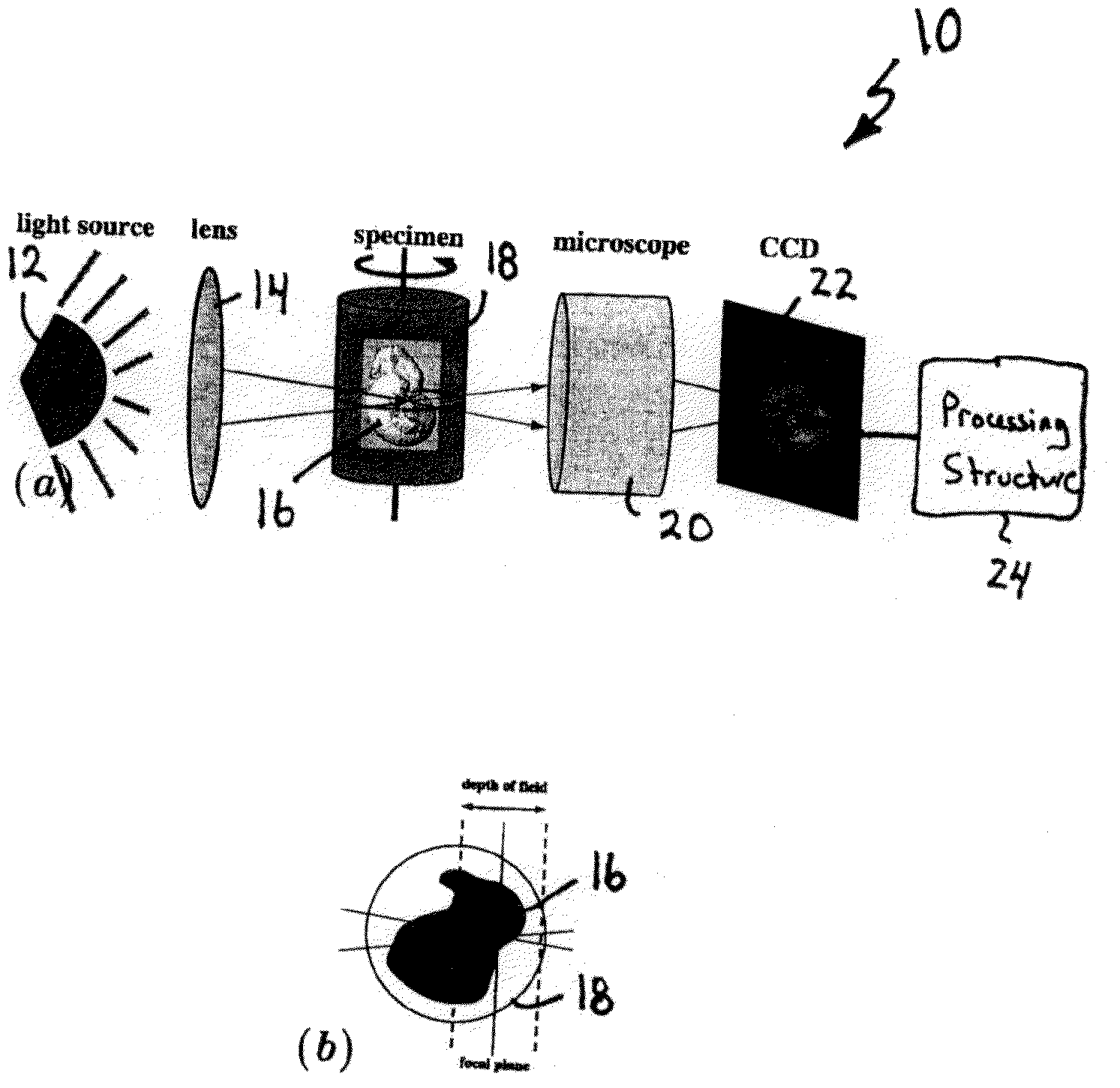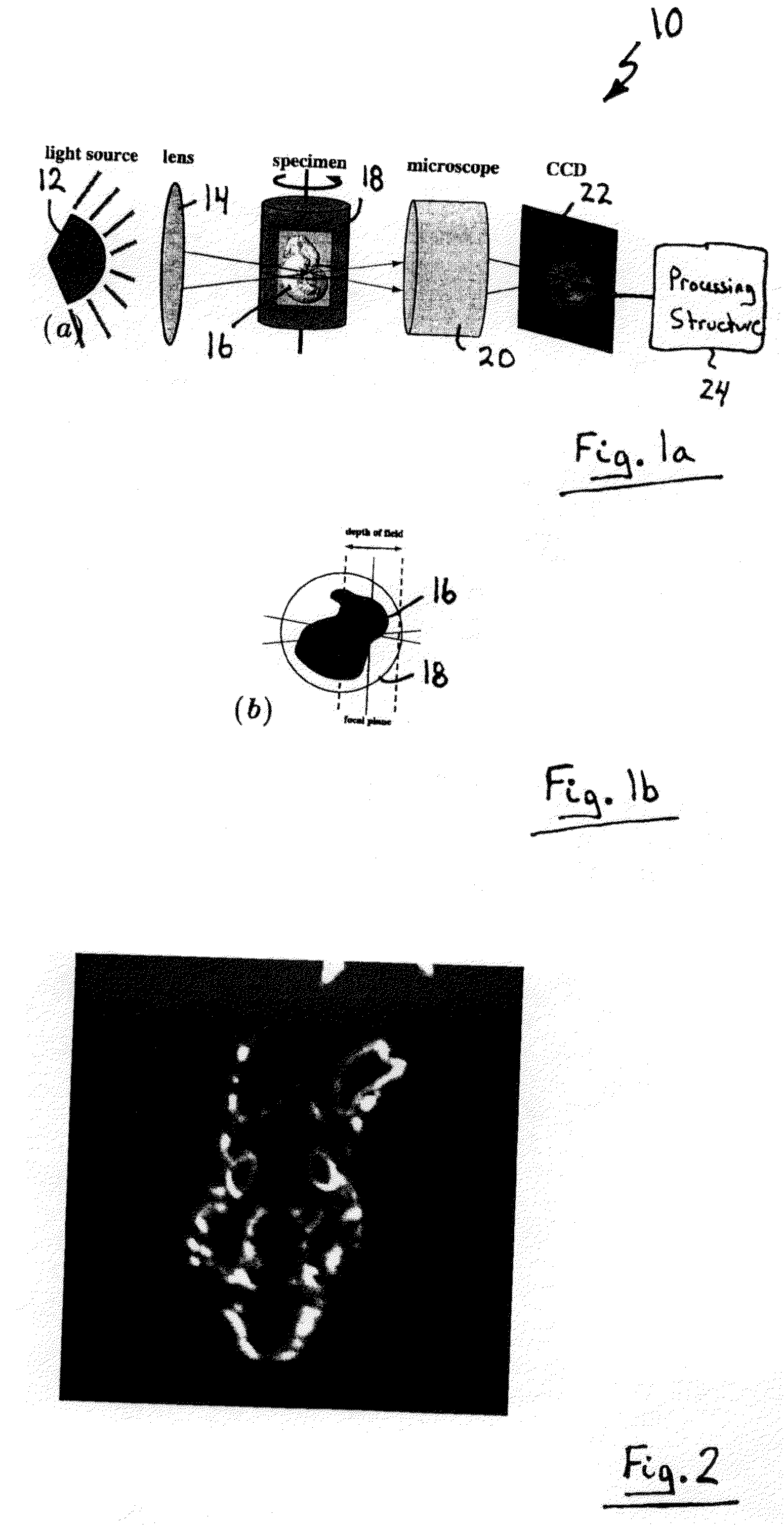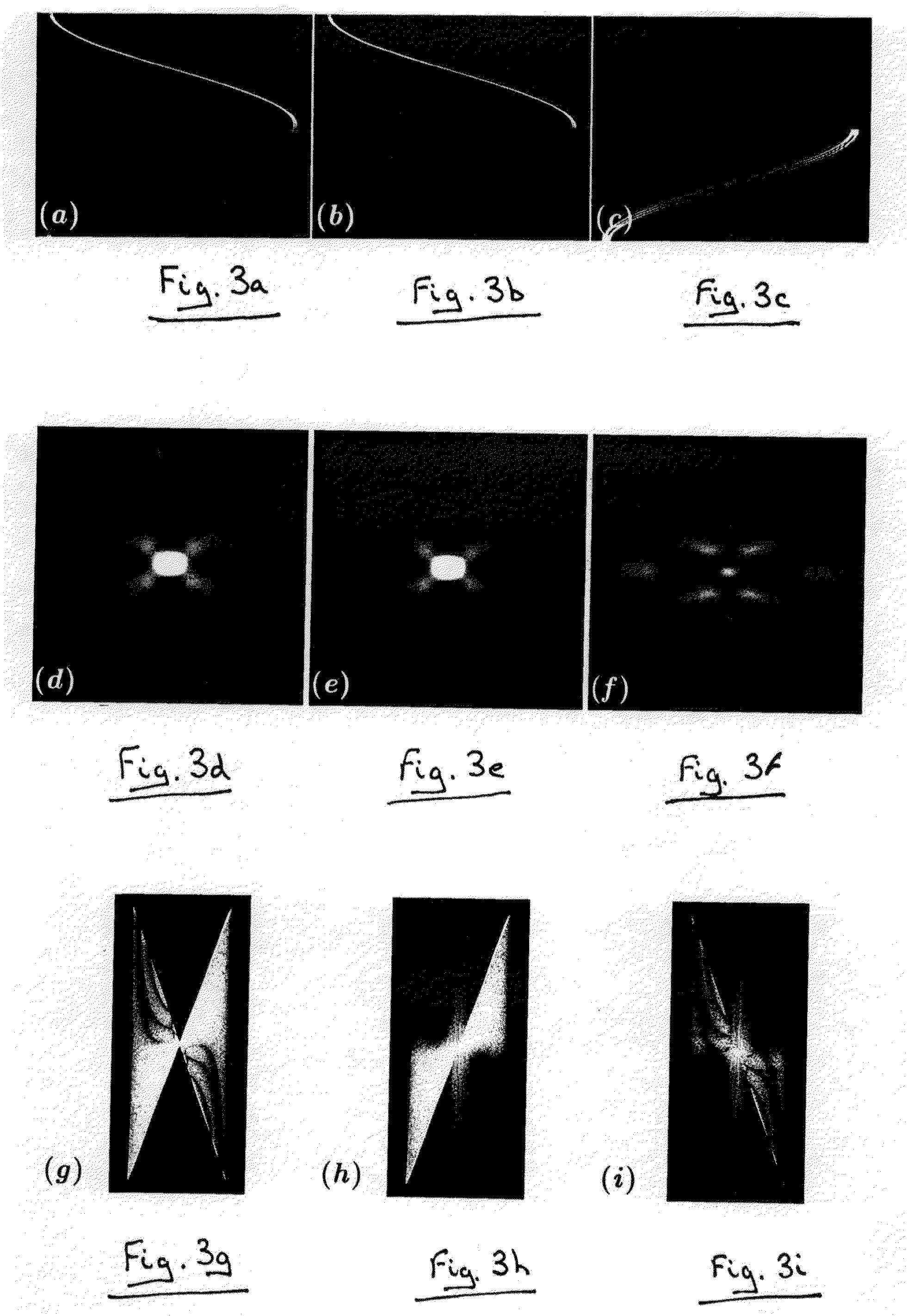Resolution improvement in emission optical projection tomography
a technology of optical projection and emission tomography, applied in the field of optical projection tomography, can solve the problems of preventing the use of samples for further analysis, time-consuming techniques, and inability to accommodate the absorbing molecular markers commonly used, and achieve the effect of reducing blur
- Summary
- Abstract
- Description
- Claims
- Application Information
AI Technical Summary
Benefits of technology
Problems solved by technology
Method used
Image
Examples
Embodiment Construction
[0061]Turning now to FIG. 1 a, an optical projection tomography (OPT) apparatus is shown and is generally identified by reference numeral 10. As can be seen, OPT apparatus 10 comprises a light source 12, in this embodiment a mercury vapour arc lamp, that directs widefield illumination towards a lens 14. The lens 14 in turn focuses the widefield illumination onto a specimen 16 within a container 18. The container 18 has optically flat parallel windows and contains a 1:2 mixture of benzyl alcohol and benzyl benzoate (BABB) therein. The container 18 is rotatable about an axis of rotation that is perpendicular to the optical axis of the OPT apparatus 10 to enable the specimen 16 to be imaged at multiple angles. In this embodiment, the specimen is small (1 cc) and semi-transparent and is embedded in agarose. The refractive index of the embedded specimen is matched with the BABB mixture within the container 18.
[0062]Fluorescent photons emitted from fluorophores throughout the specimen 16 ...
PUM
 Login to View More
Login to View More Abstract
Description
Claims
Application Information
 Login to View More
Login to View More - R&D
- Intellectual Property
- Life Sciences
- Materials
- Tech Scout
- Unparalleled Data Quality
- Higher Quality Content
- 60% Fewer Hallucinations
Browse by: Latest US Patents, China's latest patents, Technical Efficacy Thesaurus, Application Domain, Technology Topic, Popular Technical Reports.
© 2025 PatSnap. All rights reserved.Legal|Privacy policy|Modern Slavery Act Transparency Statement|Sitemap|About US| Contact US: help@patsnap.com



